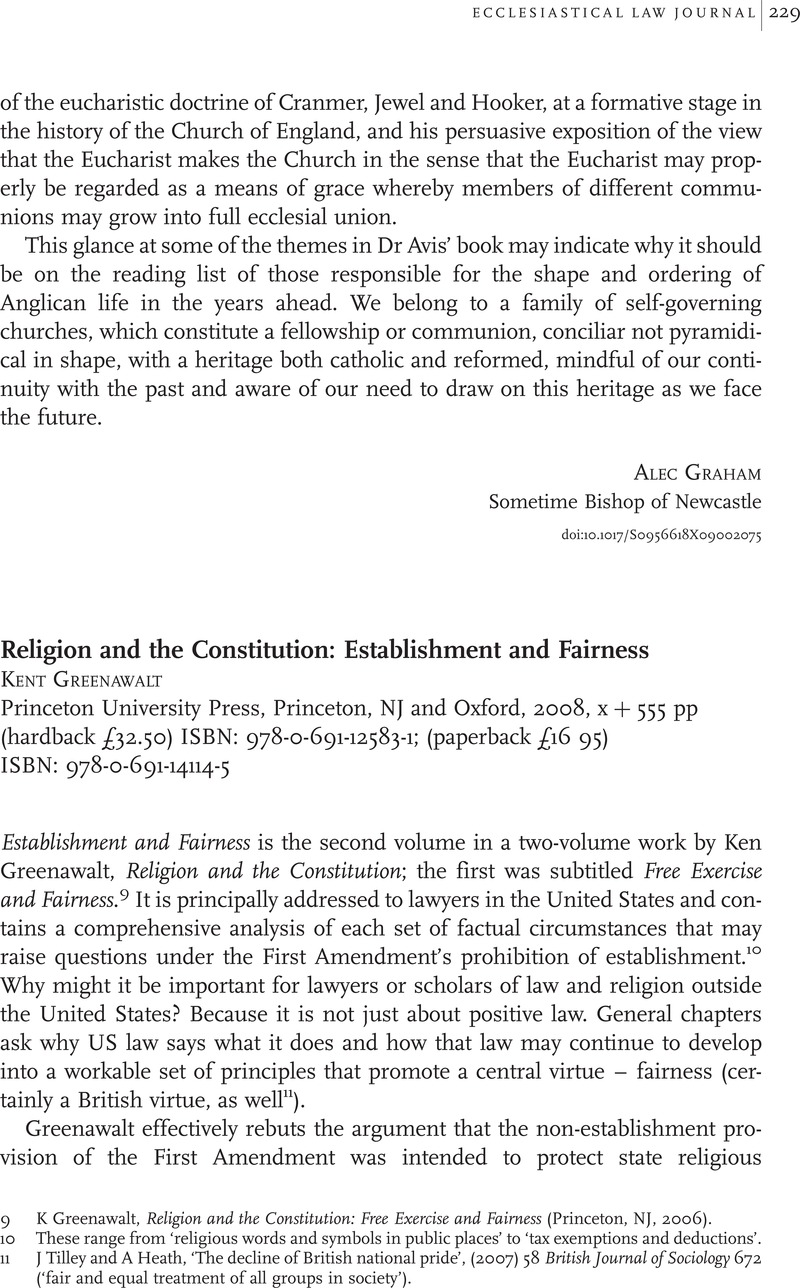No CrossRef data available.
Article contents
Religion and the Constitution: Establishment and FairnessKent Greenawalt Princeton University Press, Princeton, NJ and Oxford, 2008, x + 555 pp (hardback £32.50) ISBN: 978-0-691-12583-1; (paperback £16 95) ISBN: 978-0-691-14114-5
Published online by Cambridge University Press: 28 April 2009
Abstract

- Type
- Book Reviews
- Information
- Copyright
- Copyright © Ecclesiastical Law Society 2009
References
9 Greenawalt, K, Religion and the Constitution: Free Exercise and Fairness (Princeton, NJ, 2006)Google Scholar.
10 These range from ‘religious words and symbols in public places’ to ‘tax exemptions and deductions’.
11 Tilley, J and Heath, A, ‘The decline of British national pride’, (2007) 58 British Journal of Sociology 672Google ScholarPubMed (‘fair and equal treatment of all groups in society’).
12 See Amar, AR, The Bill of Rights: creation and reconstruction (New Haven, CT and London, 1998)Google Scholar.
13 Van Orden v Perry, (2005) 545 US 677, 699 (permitting a monument with the Ten Commandments on the grounds of the Texas state capitol), quoting School Dist. of Abington Township v Schempp, (1963) 374 US 203, 306.
14 Greenawalt does not use the term ‘pivot’, but compare McLean, I, Public Choice: an introduction (Oxford, 1987), p 109Google Scholar (defining a ‘pivot’ that turns a winning coalition into a losing one.
15 See note 13.
16 (2005) 545 US 844 (holding that the State of Kentucky could not display the Ten Commandments on courtroom walls).
17 Justice Sandra Day O'Connor believes that case-by-case adjudication under flexible standards is acceptable, so that standards can be relatively vague. Justice Antonin Scalia thinks that all judicial decisions should accord with clear criteria developed in advance (p 51).




